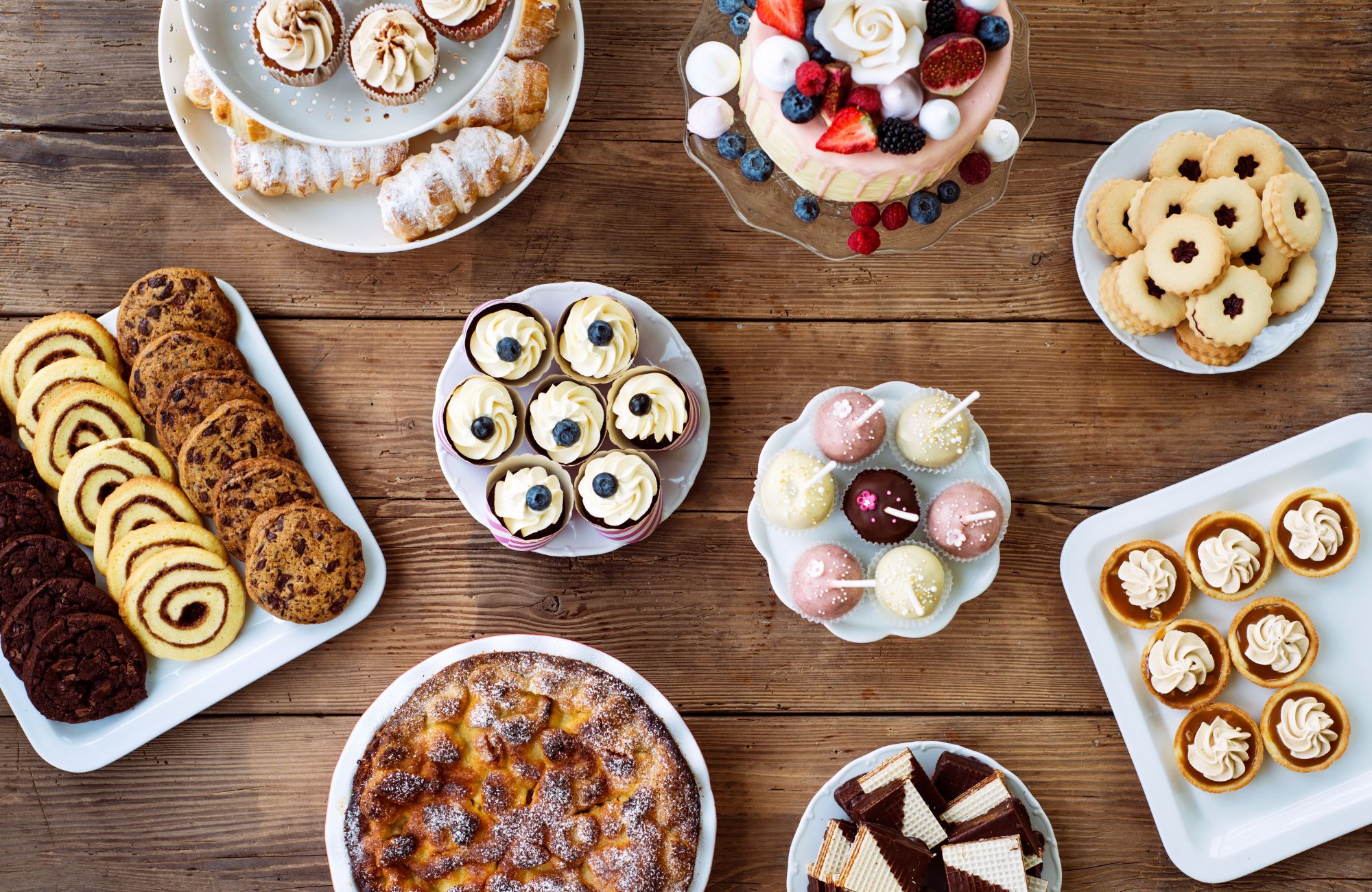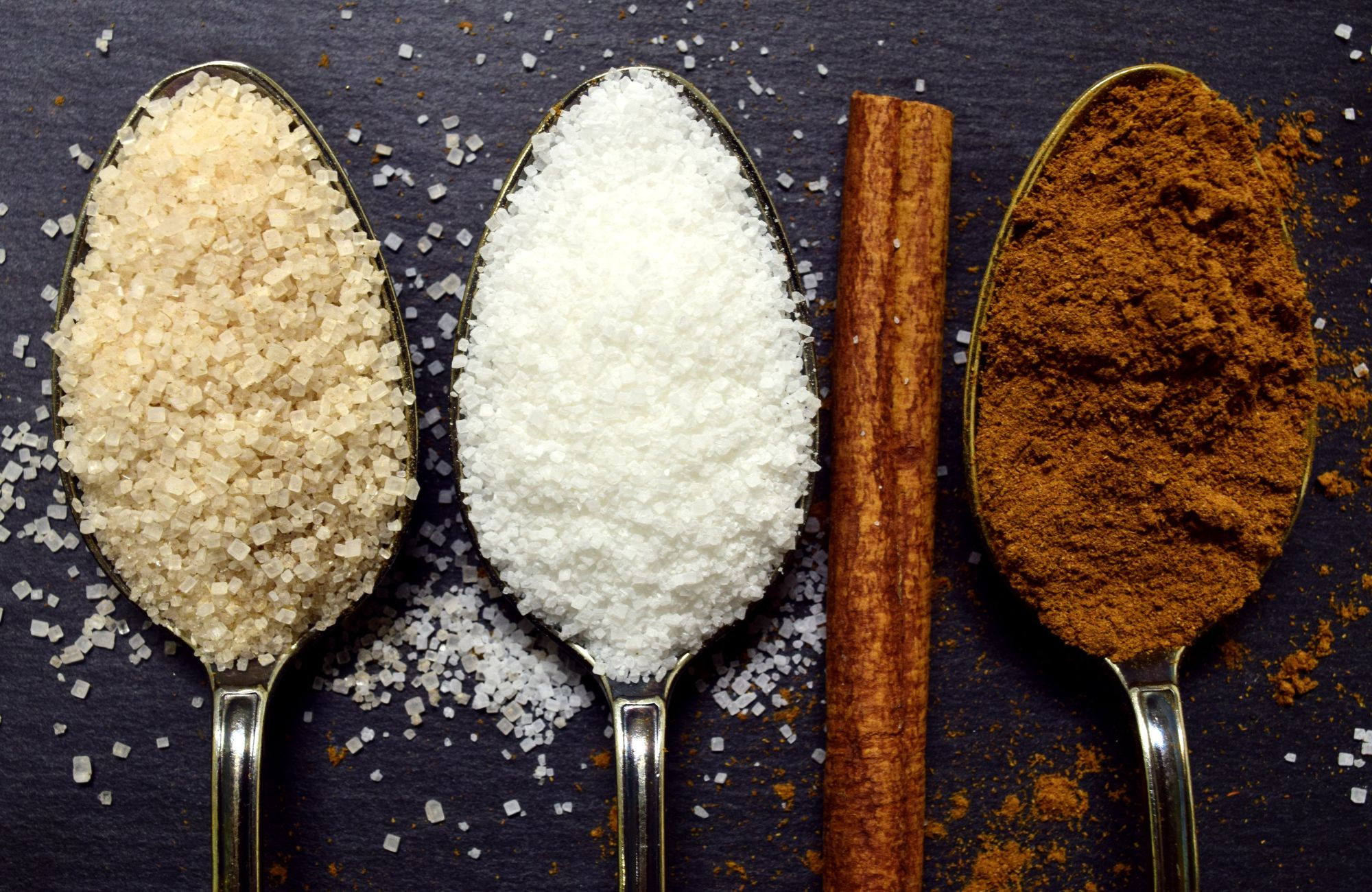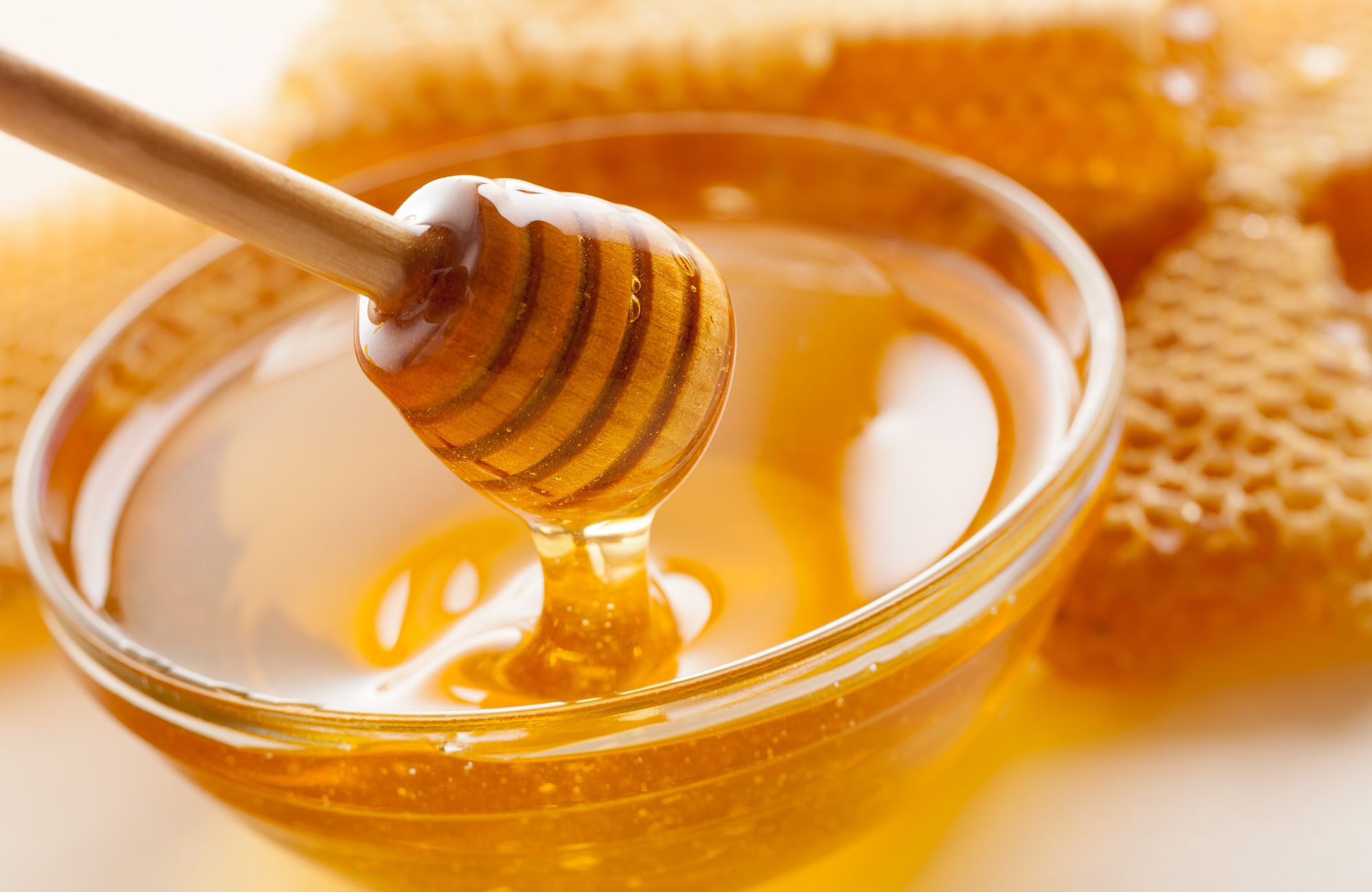
What Are the Big Sugar Crystals on Desserts?
Big sugar crystals on desserts, such as sanding sugar and coarse sugar, are used to decorate and add texture. Unlike table sugar, which has a finer grain, these larger crystals make desserts look sparkling and add a satisfying crunch. In this article, we will delve into what are the big sugar crystals on desserts, how they are made, and how to use them in your baking.
Key Takeaways
- Big sugar crystals, like sanding and coarse sugar, enhance both the visual appeal and texture of desserts, providing a satisfying crunch and a sparkling finish.
- The size and type of sugar crystals used in baking significantly influence the sensory experience, including mouthfeel and flavor perception.
- Proper techniques for applying and storing big sugar crystals are essential for maintaining their quality and achieving a professional finish on desserts.
- Confectioner’s glaze plays a crucial role in maintaining the appearance and stability of big sugar crystals, ensuring they retain their sparkle and texture.
Understanding Coarse Sugar Crystals
Big sugar crystals, with their distinctive size and appearance, are a type of sugar that stands out from the everyday granulated sugar. These large crystals are known for their density and structural integrity, measured at 1.58 g/cm3, making them both compact and robust. The particle size of these sugars significantly influences the sensory experience, particularly the mouthfeel, which is crucial for the overall enjoyment of desserts.
Corn syrup, a natural sweetener derived from cornstarch, is often used in confections to prevent crystallization. Its physical properties and long glucose chains effectively hinder the formation of sugar crystals, making it a preferred choice for many cooks and confectioners over sucrose. This contrasts with the formation of big sugar crystals, which can affect the texture and mouthfeel of sweet treats.
Particle size plays a significant role in how we perceive and enjoy our sweet treats. Larger sugar crystals offer a unique experience compared to finer granules like powdered sugar or icing sugar. Grasping these differences is essential for expertly using them in baking and confectionery.
Types of Large Sugar Crystals
There are several types of large sugar crystals, each with its own unique properties and uses. Sanding sugar, for instance, is characterized by its large crystals and is primarily used for decorative purposes. Its ability to catch and reflect light makes it an ideal choice for adding a sparkling finish to cookies and cakes.
Turbinado sugar is a type of minimally refined raw cane sugar with large, medium-brown crystals. It is often confused with standard brown sugar due to its appearance. Turbinado sugar has a delicate caramel flavor and is commonly used in sweetening beverages and baking.
Muscovado sugar is an unrefined cane sugar with a high moisture content and a strong, complex flavor. Unlike standard brown sugar, muscovado retains more of the natural molasses, giving it a richer taste. It is recommended for various culinary applications, particularly in baked goods and savory dishes.
Coarse sugar, another popular variety, has larger granules than regular granulated sugar. This type of sugar is perfect for various baking applications, as it not only enhances the visual appeal of desserts but also provides a delightful crunch. Whether used for decorating or adding texture, the right type of large sugar crystals can make all the difference in your baked goods.
How Big Sugar Crystals Are Made
Creating big sugar crystals starts with a super-saturated sugar solution. As the solution cools, crystallization occurs, forming sugar crystals. The evaporation process, which concentrates the sugar solution, is crucial for growing large crystals. Carnauba wax plays a significant role in maintaining the visual appeal and stability of these big sugar crystals during the crystallization process.
Factors like stirring and cooling affect crystal size. Vigorous stirring produces smaller crystals, while minimal stirring favors the formation of fewer, larger crystals. Typically, the ideal size ranges from 500 to 700 micrometers, balancing visual appeal and textural interest.
Types of Sugar
Granulated Sugar
Granulated sugar, also known as refined, table, or white sugar, is a highly refined, multi-purpose sugar that is a staple in both baking and cooking. Made from sugarcane and sugar beets, granulated sugar is the most common type of sugar found in kitchens. Its fine crystals dissolve easily, making it ideal for a wide range of applications, from sweetening beverages to creating syrups and baked goods. Whether you’re whipping up a batch of cookies or preparing a delicate cake, granulated sugar is your go-to sweetener for consistent results.
Cane Sugar
Cane sugar is produced solely from sugarcane and undergoes minimal processing, which gives it a slightly larger grain and a darker color compared to granulated sugar. This type of sugar retains more of the natural molasses, offering a subtle depth of flavor that can enhance your baked goods. While it can be used interchangeably with granulated sugar, cane sugar often comes with a higher price tag due to its less refined nature. Its robust flavor and texture make it a favorite for those looking to add a touch of unrefined sweetness to their recipes.
Brown Sugar
Brown sugar is essentially refined white sugar with a small amount of molasses added back in, giving it a wet, sandy texture and a delicate caramel flavor. This sugar is a common ingredient in many baked goods, adding moisture and a rich taste to cookies, cakes, and sauces. There are two types of brown sugar: light brown sugar and dark brown sugar. Light brown sugar has a milder flavor and lighter color, while dark brown sugar offers a more intense molasses flavor and a deeper hue. Both types are versatile and can be used to enhance the flavor and texture of your culinary creations.
Powdered Sugar
Powdered sugar, also known as confectioner’s sugar or 10x sugar, is a type of white sugar that has been ground into a fine powder. A small amount of cornstarch is typically added to prevent clumping, ensuring a smooth, silky texture. This sugar is best known for its use in frosting, dusting, and icing, providing a delicate sweetness and a beautiful finish to baked goods. Whether you’re making a creamy buttercream frosting or dusting a batch of freshly baked cookies, powdered sugar is an essential ingredient for adding that final touch of sweetness and elegance.
Uses of Big Sugar Crystals in Desserts
Big sugar crystals are a versatile ingredient in the world of desserts. They are often used for decorating cakes and cookies, adding a touch of sparkle and elegance that immediately catches the eye. Sanding sugar and sparkling sugar are particularly popular for creating a shimmering, festive look on baked goods.
Confectioner’s glaze is often applied to these big sugar crystals to enhance their visual appeal and texture, ensuring they maintain their sparkle and crunch. Beyond decoration, these large crystals also enhance the texture of pastries, muffins, and scones. The crunchiness they provide contrasts beautifully with the soft, tender textures of these baked goods. Additionally, the slow release of sweetness from larger crystals can enhance the overall flavor experience, making your desserts even more enjoyable.
Decorating Cakes and Cookies
When it comes to decorating cakes and cookies, sanding sugar is your go-to choice. This sugar is often applied to iced cookies and decorated cakes to give them a sparkling finish and an appealing texture. The large crystals catch and reflect light, making your baked goods look even more enticing.
To achieve a professional look, sprinkle the sanding sugar generously right before serving desserts. This ensures that the crystals maintain their sparkle and do not dissolve into the frosting or dough.
Whether you’re decorating a batch of holiday cookies or a birthday cake, large sugar crystals can transform your creations into show-stopping treats.
Enhancing Texture in Pastries
Coarse sugar is particularly effective in enhancing the texture of pastries, muffins, and scones. When sprinkled on top of these baked goods before baking, the sugar maintains its structure, providing a satisfying crunch with every bite. This textural contrast makes the eating experience more enjoyable and adds a layer of complexity to the dessert.
The shiny appearance that coarse sugar provides is another benefit. As the sugar caramelizes during baking, it creates a beautiful, glossy finish that makes your pastries look as good as they taste. This combination of visual appeal and textural delight is what makes coarse sugar a favorite among bakers.
Specialty Confections
In the world of specialty confections, large sugar crystals play a significant role. In gourmet candies, these crystals provide a distinct flavor burst and a decorative touch that enhances the overall appeal of the confection. The unique shapes and sizes of the crystals can create interesting texture changes that elevate the eating experience.
These large crystals are also valued for their ability to create an appealing shine and texture in gourmet candies. Whether you’re making a batch of homemade rock candy or a sophisticated candy bar, incorporating large sugar crystals can take your confections to the next level.
Benefits of Using Big Sugar Crystals
The benefits of using big sugar crystals in desserts are manifold. They provide a distinctive crunch and visual appeal that can elevate the appearance and texture of your sweet treats. Many desserts utilize these crystals to enhance their overall attractiveness and sensory experience.
Selecting the appropriate type of sugar crystal is essential for achieving the desired effect. Whether you’re looking to add a decorative touch or enhance the crunchiness of your desserts, big sugar crystals can significantly impact the aesthetic and flavor profile of your creations.
Visual Appeal
Sanding sugar, available in various colors, enhances the appearance of baked goods by adding sparkle. This colorful sugar is perfect for decorating holiday cakes, providing a festive and eye-catching finish that makes your desserts stand out, especially when paired with brown sugar and confectioner’s glaze.
Confectioner’s glaze helps maintain the appearance of big sugar crystals on desserts, ensuring they stay shiny and stable. The distinct size of large sugar crystals contributes to the overall presentation, reflecting light and creating an irresistible shimmering effect.
Textural Contrast
Large sugar crystals provide a satisfying crunch, enhancing the mouthfeel of soft desserts like cakes and pastries. Coarse sugar, when sprinkled on muffin tops before baking, creates a caramelized, crunchy texture that contrasts beautifully with the soft interior.
This textural contrast is a key factor in elevating the overall eating experience of your baked goods.
Flavor Enhancement
Big sugar crystals gradually release sweetness, enhancing the flavor profile of desserts. This gradual release can intensify the perception of sweetness, making your treats more flavorful.
Additionally, incorporating flavored sugar crystals can add a unique taste element that complements the dessert’s main flavors, providing an extra layer of complexity.
Choosing the Right Sugar Crystal for Your Dessert
Choosing the right type of sugar crystal is crucial for achieving the desired presentation and texture in your desserts. Different dessert types require varying sizes of sugar crystals to achieve the best results, and matching the appropriate crystal size with your dessert type can significantly enhance the quality and appeal of your creations.
Matching Crystal Size to Dessert Type
Matching sugar crystal size to the dessert type is crucial. Different desserts require specific crystal sizes for desired textures and appearances. Finer crystals like caster sugar are ideal for better dispersion or incorporation, while larger crystals add visual and textural interest.
Choosing the right sugar crystal size is vital for achieving the best results in your desserts. Whether crafting delicate pastries or hearty muffins, the appropriate size will significantly enhance the quality and appeal of your creations.
Color and Flavor Considerations
The color and flavor of sugar crystals can also play a significant role in the overall presentation and taste of your desserts. Darker sugars, for instance, can add a rustic touch and richer flavor to your baked goods. The hue of the sugar crystals can enhance or contrast with the dessert, adding visual interest and complementing the flavor profile. Muscovado sugar, with its high moisture content and strong, complex flavor, can further enhance the taste and appearance of your desserts, making them more appealing and flavorful.
Tips for Using Big Sugar Crystals Effectively
Using big sugar crystals effectively can make a significant difference in the outcome of your desserts. To maintain the quality of these crystals and prevent clumping, it’s important to reduce moisture content during storage. Proper application techniques can also enhance the visual appeal and texture of your treats.
Storing sugar crystals in a cool, dry place is crucial to preventing moisture absorption and clumping. Using airtight containers can help maintain their quality over time, ensuring that your sugar crystals remain in perfect condition for your baking needs.
Applying Sugar Crystals Evenly
For a professional finish, evenly distributing sugar crystals on desserts is key. Holding the cake and sprinkling sugar crystals while rotating it on a turntable can help achieve even coverage. Another effective method is using a fine mesh sieve to distribute the crystals evenly over the dessert.
Even distribution not only enhances the visual appeal but also contributes to a consistent texture and flavor throughout the dessert. Whether you’re decorating a cake or adding a finishing touch to cookies, these techniques can help you achieve a polished, professional look.
Storing Sugar Crystals
Proper storage is key to maintaining the quality of sugar crystals and preventing clumping. Keep them in a cool, dry place to avoid moisture absorption. Exposure to humidity can lead to clumping and loss of quality.
Airtight containers effectively preserve the quality of sugar crystals, extending their shelf life and ensuring they are ready to use when needed.
Additionally, dampening the surface of the dessert slightly before applying sugar can help the crystals adhere better, enhancing the final presentation.
Popular Recipes Featuring Big Sugar Crystals
Big sugar crystals are not just for decoration; they play a crucial role in both the texture and flavor profile of various desserts. Here are some popular recipes that feature these sparkling gems, each showcasing their unique benefits and how they can transform your baked goods into delightful masterpieces.
Sparkling Sugar Cookies
Sparkling Sugar Cookies are a festive treat that is as pleasing to the eye as they are to the taste buds. The cookies are made with a basic dough combining butter, flour, and sugars, which is then rolled in sparkling sugar before baking. This process ensures that the cookies have a delightful crunch on top, adding both visual appeal and a satisfying texture.
Unlike table sugar, which has a finer grain, the sparkling sugar used in these cookies consists of larger crystals that provide a distinct crunch and resist color change when exposed to heat. The sparkling sugar not only provides a beautiful, glittering finish but also enhances the sweetness of the cookies. These cookies are perfect for holiday celebrations or any occasion where you want to add a bit of sparkle to your dessert table.
Crunchy Muffin Tops
Crunchy Muffin Tops are a favorite among muffin lovers, thanks to the delightful texture provided by coarse sugar. When sprinkled on muffin tops before baking, the coarse sugar caramelizes and forms a crispy layer, enhancing the overall texture of the muffins. This crunchy top contrasts beautifully with the soft, moist interior of the muffin, creating a delightful eating experience.
It’s best to apply the coarse sugar just before baking to ensure it maintains its structure and crunch. The use of coarse sugar not only adds textural contrast but also enhances the sweetness of the muffin tops, making them a treat that is hard to resist.
Festive Holiday Cakes
Festive Holiday Cakes are a staple during special occasions, often featuring seasonal flavors and colorful decorations. Sanding sugar is commonly used to add a vibrant touch, making the cakes look festive and inviting.
For a polished look, sprinkle the sanding sugar evenly over the cake’s top and sides just before serving. This not only enhances the visual allure of the cake but also adds a delightful crunch that complements the rich, flavorful layers of the cake.
US Sweeteners is a premier supplier of Bulk Sugar in the US
US Sweeteners has been a reliable supplier of sweeteners and sweetening agents for nearly twenty years, providing a wide variety of bulk sugar products and demerara sugar to meet the needs of various industries. From organic and brown sugars to refined and raw sugars, they offer tailored packaging options, allowing for customization with popular brands or private labeling.
The company maintains substantial inventory across multiple warehouses to facilitate quick delivery across the U.S. Their efficient logistics and rapid bulk deliveries ensure that clients receive their orders promptly, making US Sweeteners a trusted partner for food production and retail industries.
Whether you need bulk granulated sugar in 50lb bags or larger super sacks, they have the capacity to meet high demand while providing Kosher-certified and non-GMO sugar products for custom orders.
Summary
Big sugar crystals are a versatile and visually appealing ingredient that can take your desserts to the next level. From decorating cakes and cookies to enhancing the texture of pastries and specialty confections, these crystals offer numerous benefits that can transform your baked goods into delightful masterpieces. Understanding the different types, how they are made, and how to use them effectively can help you achieve the best results in your culinary creations.
As you experiment with big sugar crystals, remember to choose the right type and size for your dessert, consider the color and flavor impact, and follow proper application and storage techniques. With these tips and insights, you’ll be well on your way to creating dazzling, delicious desserts that are sure to impress. So go ahead, add a little sparkle to your sweet treats and enjoy the magic of big sugar crystals!
Frequently Asked Questions
What is the sugar in large crystals?
The sugar in large crystals is typically turbinado or demerara sugar, both of which are coarse sugars and retain some natural molasses. Turbinado sugar is a type of minimally refined raw cane sugar with large, medium-brown crystals, known for its delicate caramel flavor. These sugars can be used to sweeten drinks or as a crunchy topping for baked goods.
What are big sugar crystals, and how do they differ from regular granulated sugar?
Big sugar crystals are larger and denser than regular granulated sugar, offering a unique crunch and enhanced visual appeal in desserts. This distinct texture sets them apart from standard sugar, making them ideal for specific culinary applications.
How are big sugar crystals made?
Big sugar crystals are formed by crystallizing a super-saturated sugar solution, with key factors being the rate of cooling and stirring. This careful process leads to the growth of larger, desirable crystals.
What types of desserts benefit from the use of big sugar crystals?
Big sugar crystals enhance the visual appeal and texture of cakes, cookies, pastries, and gourmet candies, making them an excellent choice for decoration and added crunch.
How can I ensure my sugar crystals are applied evenly to my desserts?
To ensure even application of sugar crystals on your desserts, use a fine mesh sieve and rotate the dessert while sprinkling the crystals. This technique promotes a uniform distribution for an appealing finish.





Leave a Reply